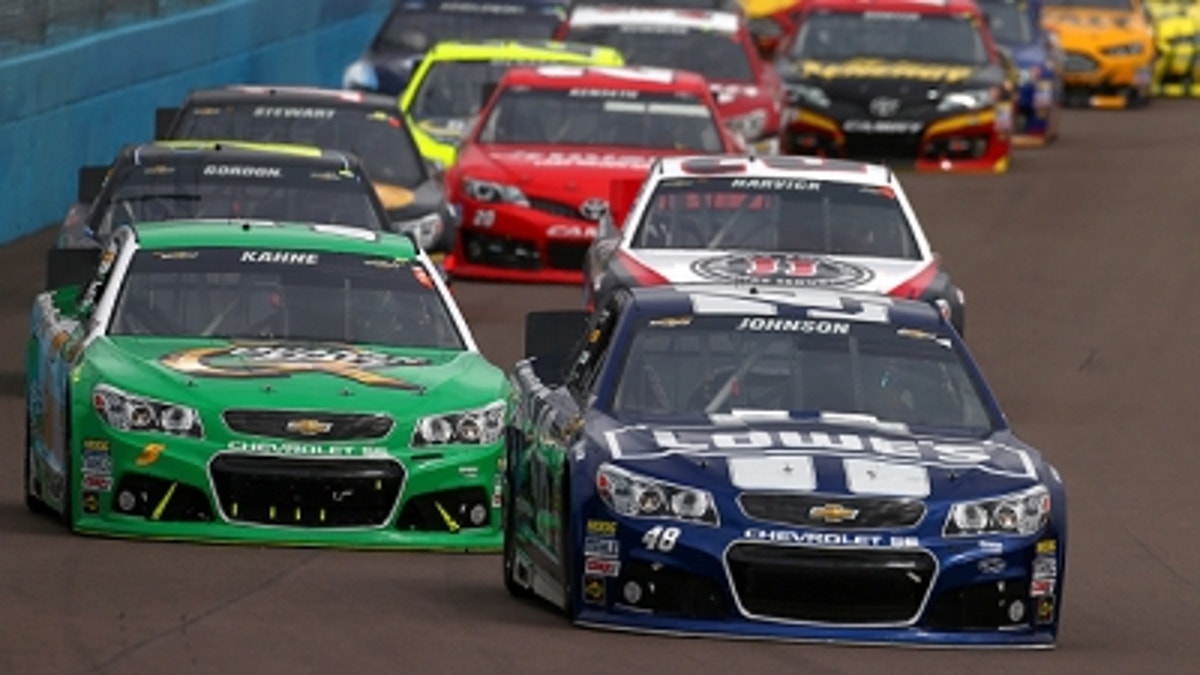
How do the drivers like the NASCAR Generation 6 car so far?
Depends who you ask.
If you’re a driver whose idea of racing is based on green-flag passes for the lead, then it may leave a little to be desired. Sunday’s Subway 500 featured 12 lead changes and only Brad Keselowski's pass of Mark Martin on Lap 127 was not made entering, during or coming out of a caution.
For Keselowski, the process began 23 laps earlier. He restarted third after the fourth caution and worked his way around Carl Edwards for second and then tried to set up the pass on leader Mark Martin. Despite having a car that was capable of leading, Keselowski had to get his car in clean air first.
Sound familiar?
“I thought we had the car to win, but I could just never get that track position towards the end that we needed,” Keselowski said. “If you could get to the lead, it looked like you had it covered.”
Yes, the dreaded aero-push still exists, even with the new cars. As eventual winner Edwards said in his post-race interview, if he could get out front to Turn 1 on the final restart, he could take off.
Keselowski acknowledged that clean air is “probably more important than ever.”
“I think these cars probably drive easier than any race car I’ve ever driven in my life by themselves, and probably (are) the hardest to drive of any race car I’ve ever driven in traffic,” Keselowski said. “I think we can get that a little bit better and probably make them a little more difficult to drive by yourself, but a little easier to drive in traffic, we could have even better races than what we had today.”
Second-place finisher Jimmie Johnson and Tony Stewart, who finished eighth, echoed Keselowski’s sentiments. The greatest takeaway from both of the Chevy SS drivers was the peril of taking four tires over two during pit stops and being mired in the pack for restarts.
“I think it was just a matter of where you cycled on the pit stops as far as when everybody figured out you had to take two tires (rather) than four,” Stewart said. “It was just a matter of figuring out where in the cycle you were and whether you could get back the track position. When we got up to the top three or four there we had good speed, but when you got hemmed up in the back there it was hard to make up that ground.
“You could still pass. It was harder to pass the further back you were.”
But if racing was easy, wouldn’t we all be doing it?
Let’s not forget that two of NASCAR’s top drivers -- Kurt Busch and Denny Hamlin -- that started from the back of the field after a car and engine change, respectively, both made it to the front over the course of the race.
For Busch, it took just 31 laps to soldier through the field and into the top 10. Hamlin, who finished the race in third, broke into the top 30 in 10 laps and was up to 17th by the first caution 12 laps later. After the race, however, Hamlin deflected the credit to “teamwork.”
“I hate to be Denny downer, but I just didn't pass that many cars today,” Hamlin said. “That's the realistic fact of it. You look and we started 40-something, we finished third and you think that we just motored our way through the pack, and that's just not the case of what happened.
“I'm ecstatic about our finish, don't get me wrong, because we did not have a third-place car today. But my pit crew just kept putting me in a position to race those guys, and then I capitalized when one or two guys in front of me made some mistakes here and there, I'd get one more spot, two more spots, next thing you know I've got a shot to possibly get a win at the end.
“That's what you've got to do when you don't have the best car.”
With only two races in on the Gen-6, it’s way too early to make a call on whether the car will be better than its predecessor. It’s still a work in progress. And although Phoenix was a departure from the race at Daytona, the first real test should come at Las Vegas Motor Speedway next weekend and then in the upcoming races at Fontana, Texas and Kansas where aerodynamics play a huge role.
Johnson didn’t notice much difference in the characteristics of racing at Phoenix between the old car and the Gen-6 model, particularly with the reconfiguration of the 1-mile track in 2011.
“I don't think the Gen-6 car has anything to do with it at this point,” Johnson said. “I think next week in Vegas we have a track that has multiple lanes and we'll see some great side-by-side racing.
“The garage area and the teams and owners and the competition side of NASCAR have worked so hard to make these cars equal and we keep changing and jumping through hoops, new chassis, new bodies, new this, new that."
Given the parity among the top teams, it’s clear that the current points leader would consider other options before giving up on the new car.
“The cars are equal and when they're equal you're going to have a situation like this," Johnson added. "What we need now is the racetracks to consider the asphalt they're putting down and even reconfigure the lanes so that we have somewhere to race.”
